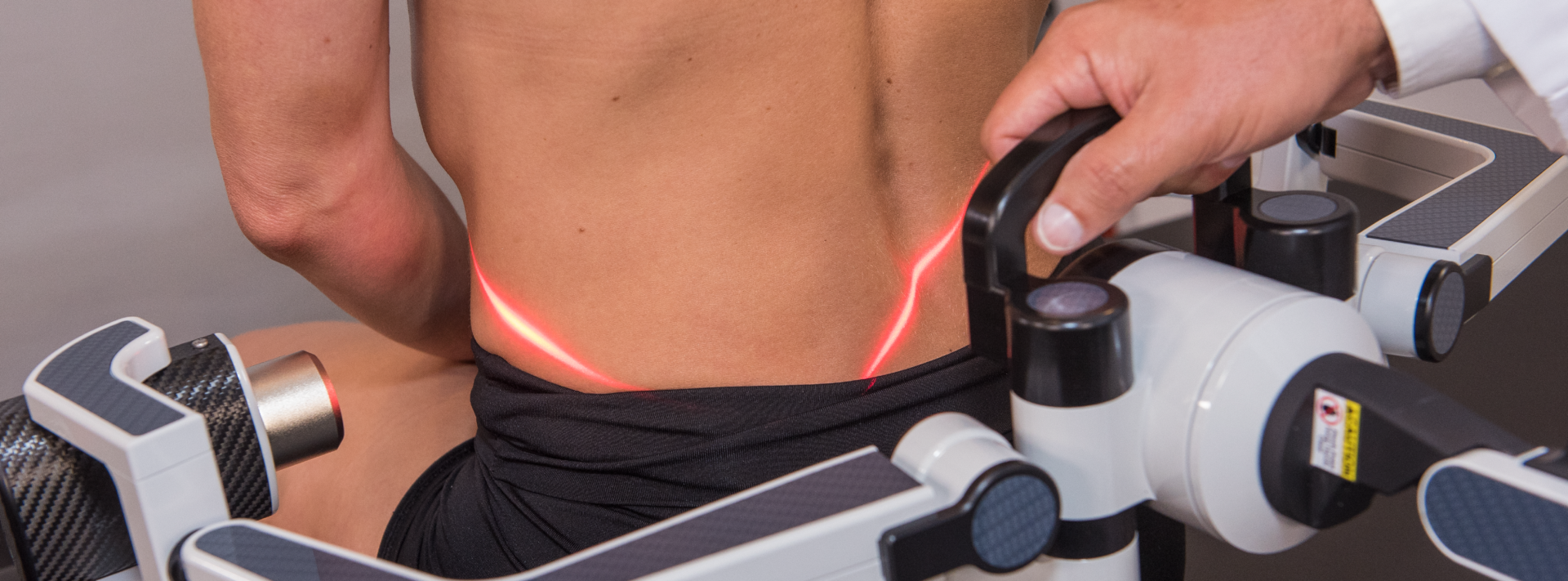
Opioids are a family of medications commonly prescribed to treat back pain. Unfortunately, over the past few decades, a rise in opioid prescriptions has led to a rise in misuse, addiction, and overdoses. As a result, physicians have been tasked with weighing the possible benefits of opioid use against its risks. What is required is effective non-opioid alternatives that have an acceptable low-risk profile, like Low-Level Laser Therapy (LLLT), to treat musculoskeletal pain.
Apart from the LLLT and opiate pain medications, other therapies include steroid injections, non-steroidal anti-inflammatory drugs, and surgery. However, patients should be aware of the specific risks associated with each approach. This article teaches how to reduce opioids prescriptions for back pain by using LLLT and other alternatives.
What are Opioids and How Do They Work
Also known as narcotics, opioids are medications prescribed by physicians to treat severe or chronic pain. They are commonly used by patients experiencing acute postoperative pain, people with chronic back aches or headaches, and those having severe pain due to cancer. Doctors can recommend opioids to children and adults who have suffered severe injuries after a fall, car accident, and other incidents.

How do these medications work? Opioids attach to opioid receptors in the brain, gut, spinal cord, and other body parts and block pain messages sent via the spinal cord to the brain. While they relieve pain, increased use of opioids can have serious risks and lead to addiction.
In most cases, opioids are taken in pill form, but they can also be taken as lollipops or lozenges. Doctors may also administer them through IV, injection, or a patch placed on the patient’s skin. Because of their side effects, opioids should be used only under a doctor’s supervision.
Different Types of Opioids and Potential Side Effects
There are many types of opioids that doctors prescribe. They come in different names, including:
- Morphine
- Codeine
- Fentanyl
- Hydrocodone
- Oxycodone
- Oxymorphone
They are sold under different brand names like Percocet, Palladone, OxyContin, and Vicodin. Sleepiness, nausea, and constipation are commonly reported opioid side effects. However, there are other life-threatening side effects of an opioid overdose that should be reported to a physician as soon as possible. They include:
- Slowed heart rate
- Loss of consciousness
- Shallow breathing
Addiction can also occur after prolonged use of opioids and patients may find themselves taking more drugs to relieve the pain.
Low-Level Laser Therapy as an Alternative to Prescribing Opioids for Back Pain
The majority of people have experienced back pain at some point in their lives and some of them end up developing chronic back pain. In search of a cost-effective and safe treatment that can reduce opioid prescription for back pain, LLLT was developed and is being used by various specialties worldwide.

What is LLLT?
Also known as Low-Level Laser Therapy or Photobiomodulation, Low-Level Laser Therapy is a low-intensity light therapy that causes biochemical changes within body cells. It is a non-invasive low-light treatment with no sound, heat, or vibration.
LLLT is likened to the photosynthesis process in plants, where cellular photoreceptors absorb photons and trigger chemical changes. Many physiotherapists use LLLT to treat lower back pain. Different wavelength lasers (varying from 632 to 904 nm) are used to treat musculoskeletal pain. These wavelengths can penetrate soft or hard tissue and skin to treat inflammation, pain, and tissue repair.

Potential LLLT Benefits
Low-Level Laser Therapy is one of the best options that can provide pain reduction or relief, especially for patients seeking treatment that does not require surgery or medication. Since the therapy is a non-invasive procedure, it doesn’t require prolonged recovery. LLLT addresses several orthopedic conditions and promotes faster healing. Also, there are no severe side effects associated with LLLT when used appropriately by a doctor.
While LLLT is a non-invasive procedure and promotes faster healing, patients may take a series of treatments to get total relief. The number of treatments can range from 8 to 30, depending on the duration and severity of the pain.
Other Alternative Treatments for Back Pain
Apart from LLLT, other alternatives to opioid use for back pain relief are available. Non-opioid drugs that are available by prescription or over the counter include acetaminophen (Tylenol), aspirin (Bayer), ibuprofen (Motrin), and steroids. Patients who want to avoid the side effects of opioids may prefer using these drugs.
Also, a doctor may recommend other non-drug therapies that can be effective alone or in combination with pain relief drugs. These therapies include:
Physical therapy
A physician or a physical therapist specializing in rehabilitation and physical medicine may recommend an exercise program to help decrease back pain and improve your overall health. Deep muscle massage, whirlpools, and ultrasound may help relieve pain too. Motor control exercise helps restore, control, coordinate, and strengthen muscles supporting and controlling the spine.

Acupuncture
Patients have reported finding pain relief in acupuncture, where thin needles are inserted at different spots in the skin to interrupt pain signals. The therapy is well-tolerated with less serious side effects.
Surgery
Surgery may be the next option for severe back pain that persists for six to twelve weeks of other nonsurgical treatments. In rare cases, an immediate surgery procedure is performed for low back pain.
A doctor may recommend a decompression surgical procedure to alleviate back pain due to pinched nerves. Surgery may be performed if the patient is unable or has limited ability to function normally in everyday life.
Injections
Back pain injections help treat inflammation and spinal stenosis. Also, physicians use injections to treat other back pain types. They may use nerve block injections, discography, or epidural injections.
In pain management, clinicians may recommend the use of opioids. While the safest possible treatment is to stop opioid prescription for back pain, abrupt cessation of opioid medication can also have adverse effects on the patient. Patient safety should be the top consideration in treatment procedures, and doctors should focus on other alternatives to an opioid prescription for back pain.
Related Reading: Laser Therapy and Chiropractic Care: How They Work Together
Find a ProviderBecome a Provider



